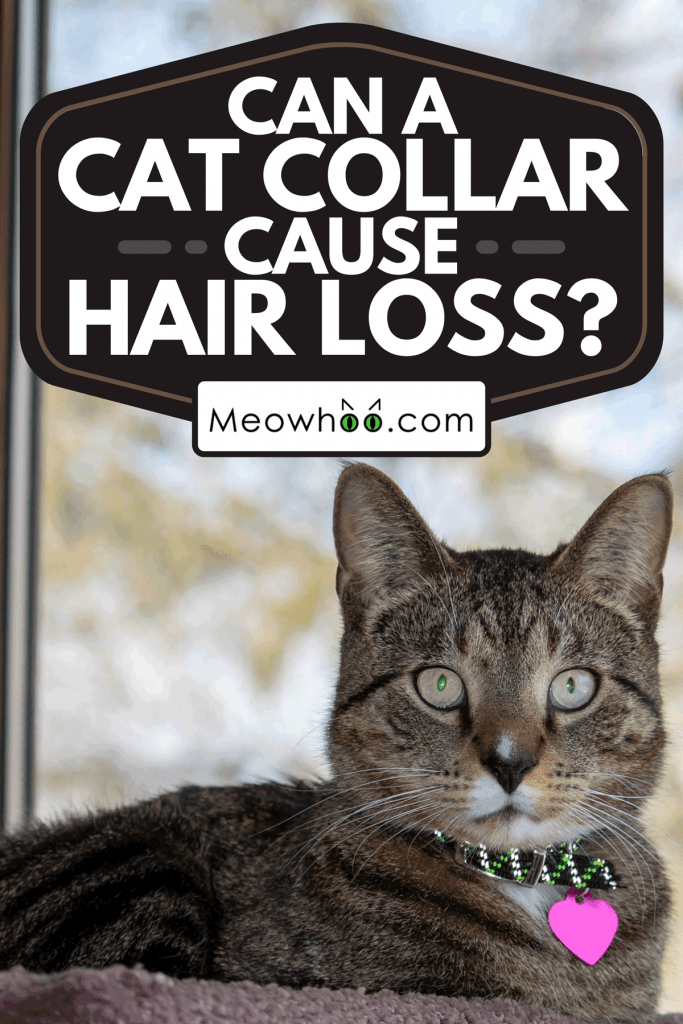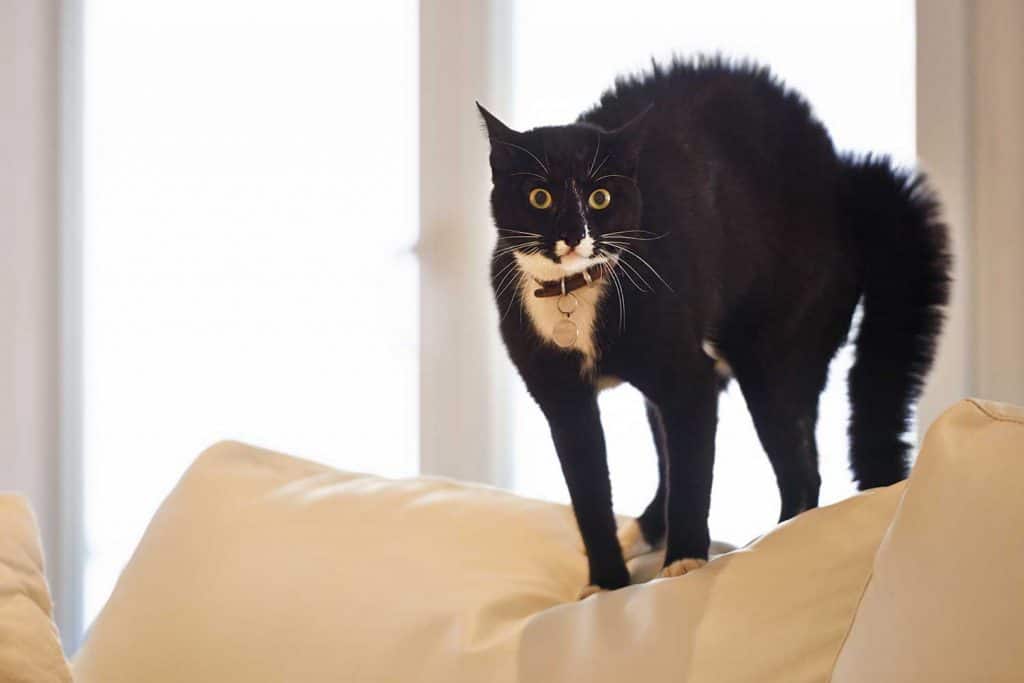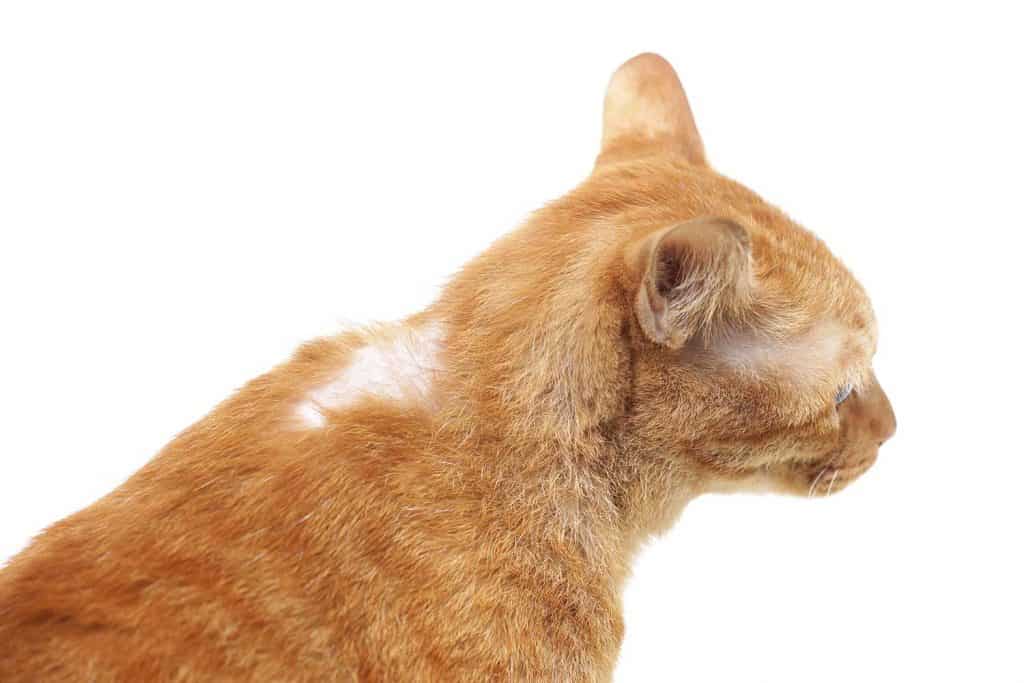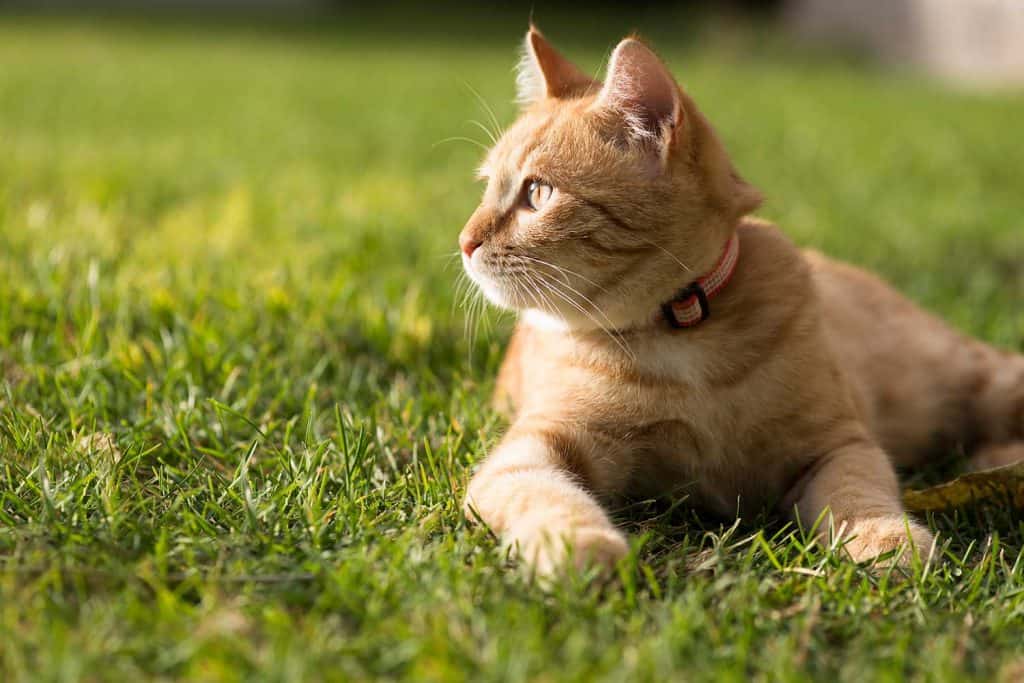Are your cats losing their hair from their neck? Can a cat collar cause hair loss? If this issue's culprit is the collar, how can you avoid this problem in the future? We researched and consulted with experts in the pet industry to answer these questions. Here's what we found out.
Collars can become the main issue for hair loss in cats, particularly around the animal’s neck. A tight-fitting collar can act as an abrasive as the material rubs along the feline’s skin, causing fur loss. Another reason could be that your cat is wearing a flea collar and the product has harsh chemicals that harm your pet’s sensitive skin.
Continue reading to know more details on why cat collars can cause hair loss. Additionally, you’ll find other relevant information, such as the safest collars for cats and how to avoid hair loss in felines caused by collars.

Why Is My Cat Losing Hair Under His Collar?
Cats can experience baldness in the neck area because of their collars. The two main reasons for this problem are ill-fitting collars and aggressive chemicals in flea collars.

Ill-Fitting Cat Collars
According to the International Cat Care’s advice on cat collars, some cats may tense their neck muscles during their first time wearing collars. If the collar is comfortable, the felines should revert to relaxed states after a few minutes. However, if the collar is too tight, the cats’ muscles might continue to be stiff for extended periods.
Ill-fitting cat collars can turn into an abrasive thing. As the band rubs against your cat’s skin, it acts like sandpaper, causing hair to fall out. Over time, your pet’s skin will become bald. Additionally, you’ll also see dry and irritated skin forming on the cat’s neck.
Aggressive Flea Collars
Flea collars either emit a toxic gas or release a chemical that liquefies and expands across the animal’s skin. Both can kill or drive away fleas nesting in your cat’s skin. However, some flea collars have harsh chemicals that irritate the animal’s skin and fur, causing hair loss.
Another possible reason is that your cat has sensitive skin. The flea collar your pet is wearing may not have harsh chemicals or toxins, but your feline is having an allergic reaction to them.
Here are other potential reasons for cat hair loss that might aggravate because of a collar:
- Unhealthy diet (too much dry cat food)
- Food allergies
- Hormonal imbalances
- Ringworms
- Bacterial or fungal infections
- Stress
Is it Normal for Cats to Lose Hair Where Their Collar Is?

In some cases, it’s normal for cats to lose hair around their necks and in other areas of their bodies. As per this post, cats shed because they’re preparing their systems for seasonal changes. The rate at which cats shed depends on different factors, such as breeds and fur lengths. For example, a Persian will shed more fur compared to a Sphynx.
However, extended durations of hair loss around the neck, especially those accompanied by irritability, discomfort, and pain, means that the collar could be the culprit to the issue. Jennifer Coates, DVM, told POPSUGAR in an interview that prolonged exposure to harmful collars can even lead to follicular or ovarian cysts, which require surgical removal.
Is a Collar Bad For Cats?
A collar isn’t bad for cats. But pet parents need to check different factors, such as their fur baby's age, before choosing a cat collar. Selecting the wrong collar can lead to hair loss around your pet’s neck, along with other issues like wounds and breathing difficulties. In some cases, tight collars can get jammed in a cat’s mouth, preventing the animal’s mouth from closing.
How Tight Should a Cat Collar Be?
Cat collars need to be firmly fitted but not too tight that it brings discomfort to them. After letting your feline wear a collar, notice the animal's actions for a few minutes. Make sure that your pet isn't complaining about the collar. Also, you should be able to insert one or two fingers underneath the collar to ensure that the collar is reasonably snug.
What is The Safest Collar for a Cat?

Many cat collar options are reasonably safe for different household felines. However, pet parents may consider letting their cats wear breakaway collars to improve the animals’ safety.
As its name implies, a breakaway collar will unsnap or unfasten if something pulls on it with enough force. For instance, if your cat’s collar gets caught in a tree branch of a house plant, your pet can use its feet to tug on the band to remove it.
Additionally, cats can remove a breakaway collar by themselves if they find the material irritable. In turn, this type of collar can reduce the risks of fur loss around the animals’ necks, along with other issues.
Take a look at this GoTags breakaway safety collar on Amazon.
How to Avoid Hair Loss in Cats?
Different factors can contribute to feline hair loss, which may or may not include the wearing of inappropriate cat collars. Take note that you can prevent significant fur loss by observing your pet. Then, make the necessary actions before the condition worsens.
Remove the Cat Collar
If you see your pet experiencing any kind of discomfort while wearing the cat collar, remove the band from the animal's neck immediately. Prolonged exposure to the uncomfortable collar can introduce different issues to your cat, including fur loss.
Treat Behavioral Issues
Different cats have varying personalities, and pet parents need to understand their fur babies' behavior to form mutual bonds. For instance, your cats don't like using their litter box or have a knack for scratching or chewing on furniture.
Hitting and screaming at your pet won’t solve these problems and will only aggravate the issue. Plus, the added stress can increase the hair loss rate. Instead, it’s important to address these concerns at the core. For example, if your cats don’t use their litter boxes, you may want to change the type of litter they’re using. On the other hand, you may coerce your cat to scratch their posts more by using some catnip.
Consult Your Veterinarian
If you’re stuck wondering why your cat is losing fur at a faster than average rate, bring your pet to the veterinarian as soon as possible. Your pet may be ill with an underlying disorder that causes the animal to shed hair quickly.
One example is hyperthyroidism, which is a relatively common illness in cats, according to the Cornell Feline Health Center. This health concern comes from an increase in the cat’s thyroid hormone production, causing an enlarged thyroid gland. In most cases, this bump is non-cancerous. However, not treating the problem can lead to other symptoms, such as weight loss and excessive thirst.
Final Words
Ill-fitting cat collars and aggressive flea collars can cause hair loss in felines, particularly around the animals’ necks. Many cats will immediately show signs of discomfort if they have problems with their collars. Removing the collar should reduce or eliminate the risks of excessive fur loss in cats. However, if your pet is still showing signs of significant hair loss even when they’re not wearing a collar, consult your veterinarian immediately.
Some elements on this page may have been created by our team using advanced AI to provide you with top-notch cat inspired ideas. Read more about our AI Content Policy.

